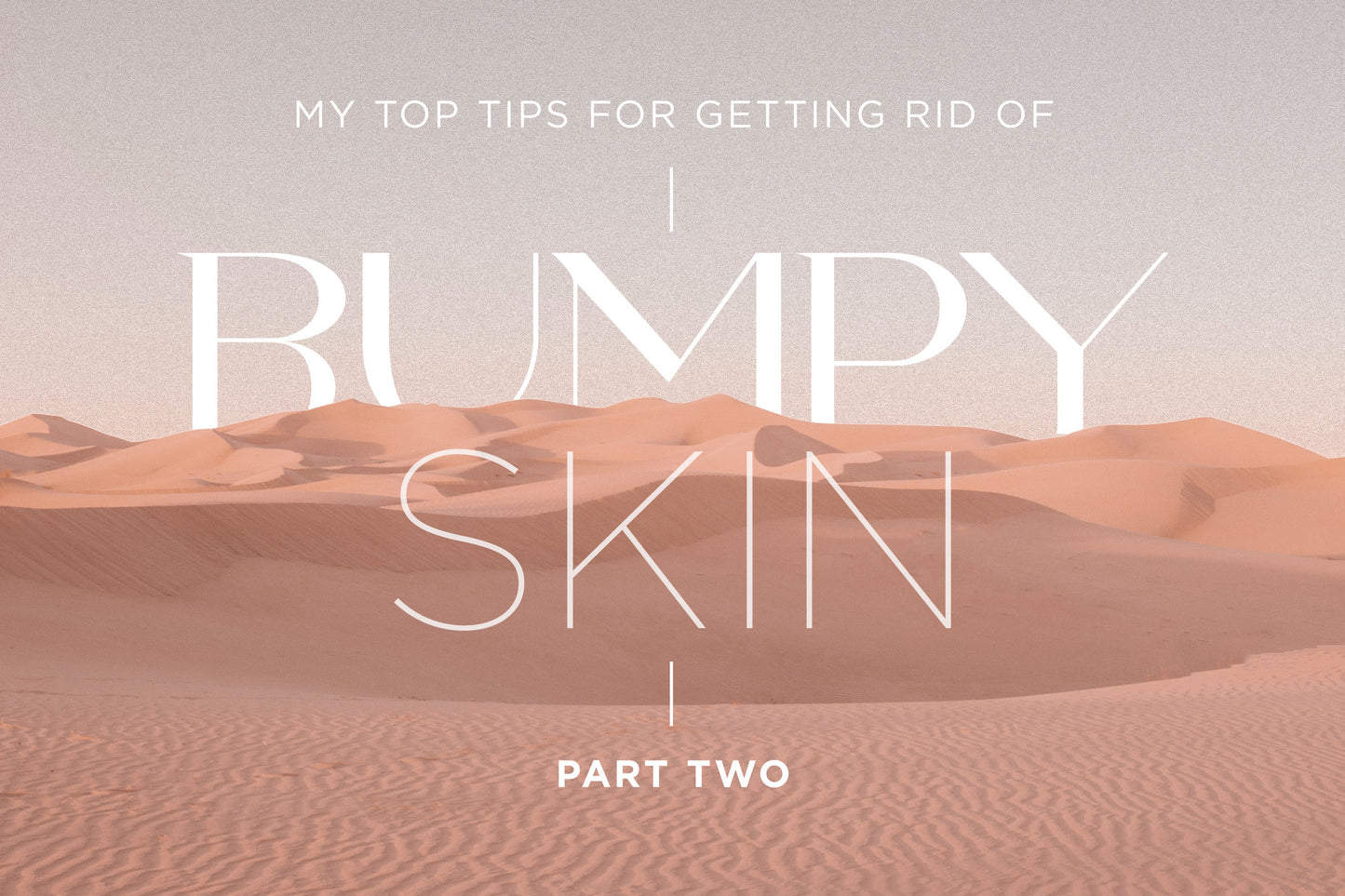
Welcome to the second part of my series on bumpy skin, one of the most common skin issues I see as a dermatologist.
We’ve already covered off subliminal acne, milia and rosacea in part 1 of the blog (catch up here) - now let’s address keratosis pilaris and perioral dermatitis.
Here’s how to identify if you have these types of bumpy skin - and how to get rid of them.
KERATOSIS PILARIS
Often referred to as “chicken skin”, keratosis pilaris (or KP for short) refers to red bumpy skin on the backs of your arms, front of your thighs, perhaps your butt and sometimes on the cheeks of your face. It’s essentially clogged hair follicles filled with keratin (hence the rough texture), associated with increased red vessels around the follicle opening. KP is extremely common, affecting 50-80% of adolescents and 40% of adults.
HOW TO TREAT IT:
Exfoliate: Regular exfoliation is the best way to manage this chronic skin condition. BUT NOT with a loafer that can just create additional inflammation and irritation. Think AHAs, BHAs and prescriptive vitamin A. Using my Concentrated Clarifier daily and my Concentrated Spot Destroyer or Concentrated Micropeel (a few times a week) is an ideal treatment. For more improvement, see your doctor and add in a prescription vitamin A like Retrieve a few nights a week.
Stick to gentle cleansing: Avoid the temptation to use harsh scrubs, as these can cause irritation.
Hydrate: Dry skin can exacerbate KP, which is why the condition tends to get worse during winter. Use my Concentrated Moisturiser or Concentrated Hydration, morning and night.

SHOP MY TOTAL SKIN GLOW + ACNE KIT NOW
PERIORAL DERMATITIS
This condition refers to those little red lumps and bumps that crop up around the “orifices” of the face, think nose, mouth and eyes. While often dry and sensitive, with time these bumps can become inflamed and pustule-like. PD is often caused by what I like to refer to as cosmetic overload/cosmetic chaos. Too many products, too many scrubs, too much foaming and sometimes too many actives. This causes a breakdown of the skin’s epidermal barrier function and leads to inflammatory eruptions. I’m
HOW TO TREAT IT:
Cut down and declutter: Simplification is key. Gentle cleansing and moisturising only, twice daily. If you can, try to refrain from wearing makeup.
Check your cleanser: Ensure you’re using a gentle, non-foaming cleanser and DEFINITELY not a scrub. Bonus points for having a cleanser that contains topical anti-inflammatories, like the DrNC Concentrated Cleanser that has B3, chamomile, comfrey extract and hydrating, soothing glycerin.
Check your products: While flare-ups occur for a variety of reasons, your skincare can play a big role. Inspect your labels and make sure you're not slathering on any potential triggering ingredients.
Choose an anti-inflammatory moisturiser: Look for ingredients like niacinamide/vitamin B3, which are clinically proven to calm and soothe skin. Check out the DrNC Concentrated Moisturiser and DrNC Concentrated Hydration.
Salicylic acid: Believe it or not, this BHA acts like an anti-inflammatory and can calm down the papules and pustules, as well as prevent them.
Get onto a tetracycline antibiotic: After years of treating this common condition that can go on for years, if you want to “nail” it, a course of anti-inflammatory antibiotics is a must. Usually 4-8 weeks of Minomycin or Doxycycline or EES.
Check out our solution for bumpy skin, our Total Skin Glow & Acne Kit.

























